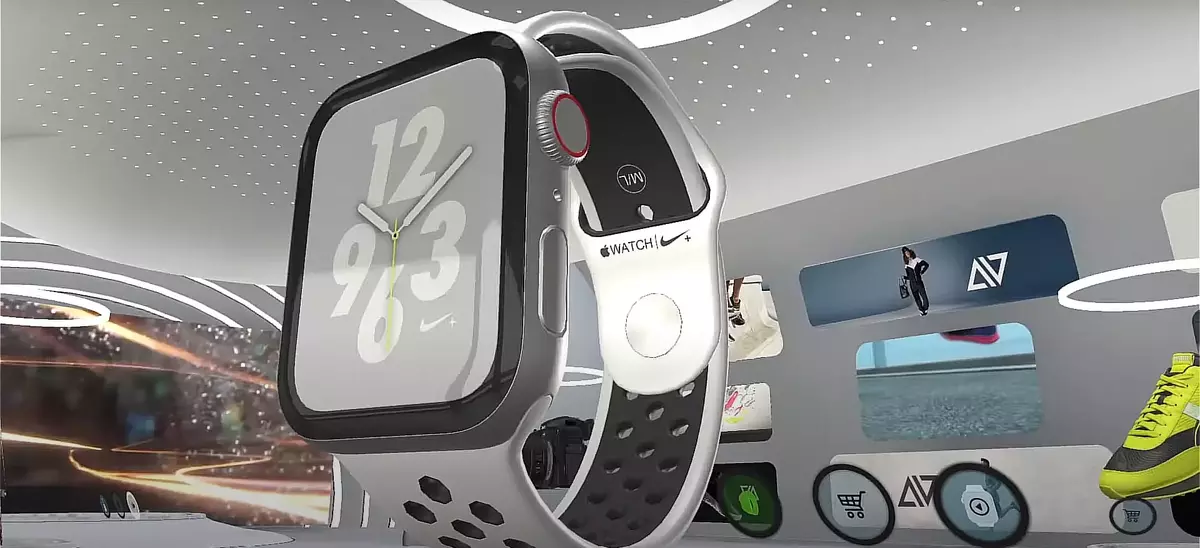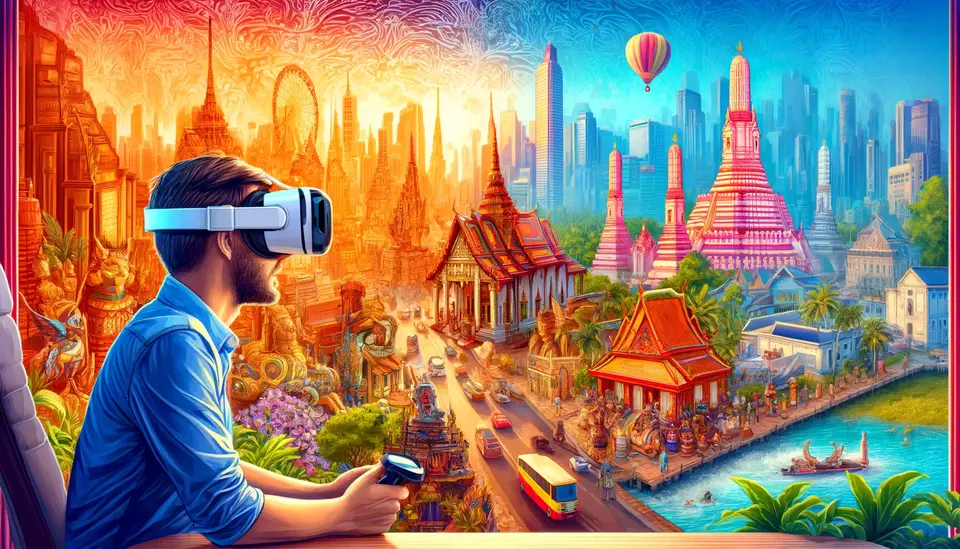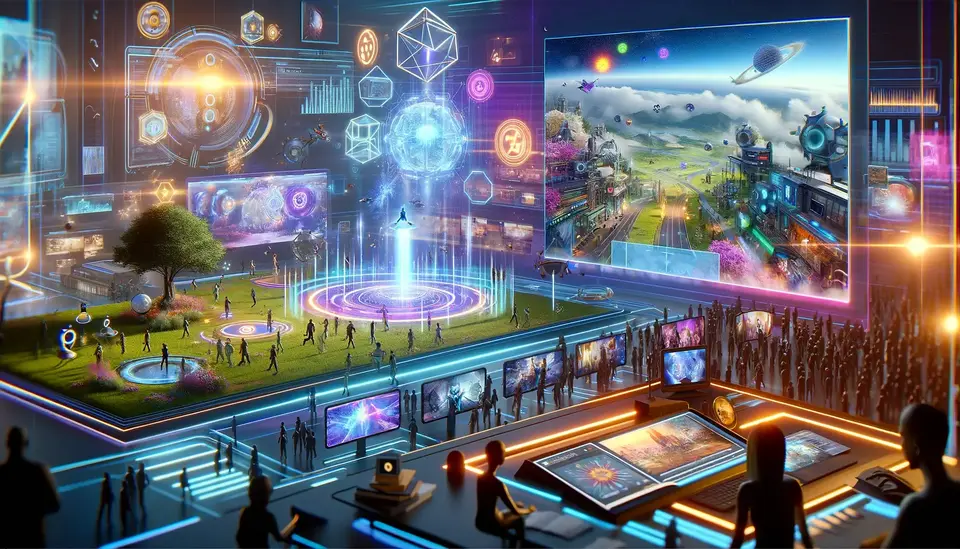15 Examples of the Use of Metaverse in Advertising
Posted on April 8, 2023 8 minutes 1502 words
Table of contents
- 1. Virtual Billboards
- 2. In-Game Sponsorships
- 3. Augmented Reality Product Demonstrations
- 4. Influencer Partnerships
- 5. Branded Virtual Spaces
- 6. Virtual Pop-Up Shops
- 7. Wearable Virtual Merchandise
- 8. Interactive Advertisements
- 9. Virtual Reality (VR) Experiences
- 10. Metaverse Treasure Hunts
- 11. Metaverse Events and Product Launches
- 12. Geo-Targeted Ads
- 13. Collaborative Marketing Campaigns
- 14. Gamified Advertising
- 15. Educational Content
- Conclusion
The Metaverse has transformed the digital landscape, offering new and exciting ways for brands to advertise their products and services. In this blog post, we’ll dive deep into 15 innovative examples of how companies are leveraging the Metaverse for advertising, complete with real-world cases and insights.
1. Virtual Billboards
Companies placing digital billboards in popular Metaverse locations to showcase their products and promotions.
Virtual billboards are a popular way for companies to showcase their products and promotions in the Metaverse. These billboards are placed in high-traffic areas within virtual worlds, such as public squares or popular hangout spots, and can be seen by thousands of users every day.
Real-world example: Coca-Cola created a virtual billboard campaign in the game “Roblox” where users could interact with the billboard and receive virtual rewards. The campaign reached over 1.7 million unique users, resulting in increased brand recognition and engagement.
2. In-Game Sponsorships
Brands partnering with popular Metaverse games to sponsor in-game items or events, increasing visibility and user engagement.
In-game sponsorships are a popular way for brands to increase their visibility within the Metaverse. By partnering with popular Metaverse games, brands can sponsor in-game items or events, increasing their exposure to a wider audience.
Real-world example: Louis Vuitton partnered with the game “League of Legends” to sponsor in-game character skins and accessories. The partnership resulted in increased brand recognition and engagement within the game’s community.
3. Augmented Reality Product Demonstrations
Companies offering AR product demonstrations, allowing users to virtually test products before purchasing.
Augmented reality product demonstrations allow users to test a product before purchasing it in the real world. By using AR technology within the Metaverse, companies can offer users a fully immersive and interactive experience.
Real-world example: Sephora created an AR product demonstration within the game “Second Life” that allowed users to try on makeup virtually before purchasing it in real life.
4. Influencer Partnerships
Brands collaborating with popular Metaverse influencers to promote products and services through livestreams and virtual events.
Influencer partnerships are a popular way for brands to reach a wider audience within the Metaverse. By partnering with popular Metaverse influencers, brands can promote their products and services through livestreams and virtual events.
Real-world example: Gucci partnered with the popular Metaverse influencer “Noahj456” to host a virtual fashion show within the game “Roblox.” The event reached over 700,000 unique viewers, resulting in increased brand recognition and engagement.
5. Branded Virtual Spaces
Brands creating custom virtual environments that allow users to interact with their products and services in a fully immersive experience.
Branded virtual spaces are custom-built environments that allow users to interact with a brand’s products and services in a fully immersive experience. These spaces can include virtual showrooms, storefronts, and interactive experiences that showcase the brand’s offerings.
Real-world example: Nike created a virtual showroom within the game “Fortnite” to showcase its latest line of sneakers. The showroom allowed users to explore the new line of shoes and purchase them within the game.
6. Virtual Pop-Up Shops
Temporary virtual shops that showcase new product launches or exclusive offers in the Metaverse.
Virtual pop-up shops are temporary shops within the Metaverse that showcase new product launches or exclusive offers. These shops allow brands to generate buzz around new products or services and create a sense of exclusivity within the Metaverse.
Real-world example: IKEA created a virtual pop-up shop within the game “Animal Crossing: New Horizons” to showcase its latest line of furniture. The pop-up shop allowed users to explore the new line of furniture and purchase it within the game, increasing brand recognition and engagement within the game’s community.
7. Wearable Virtual Merchandise
Companies creating virtual clothing and accessories for users to wear and showcase within the Metaverse, promoting brand recognition.
Wearable virtual merchandise allows users to showcase a brand’s clothing and accessories within the Metaverse. These virtual items can be purchased or earned within the Metaverse and allow users to display their brand loyalty to others.
Real-world example: Ralph Lauren created virtual clothing items within the game “Bitmoji” that allowed users to dress their avatars in Ralph Lauren clothing. The campaign resulted in increased brand recognition and engagement within the game’s community.
8. Interactive Advertisements
Brands developing engaging, interactive ads that users can interact with, offering a unique and memorable experience.
Interactive advertisements allow users to engage with a brand’s advertising in a more meaningful way. By offering interactive elements within an ad, brands can create a unique and memorable experience for users.
Real-world example: McDonald’s created an interactive ad within the game “AdVenture Capitalist” that allowed users to play a mini-game and win virtual rewards. The campaign resulted in increased brand recognition and engagement within the game’s community.
9. Virtual Reality (VR) Experiences
Companies creating immersive VR experiences to showcase products or services, providing a deeper level of engagement.
Virtual reality experiences allow users to fully immerse themselves in a brand’s products or services. By using VR technology within the Metaverse, brands can offer users a deeper level of engagement and understanding of their offerings.
Real-world example: The North Face created a VR experience within the game “Minecraft” that allowed users to explore a virtual Yosemite National Park. The experience showcased The North Face’s outdoor gear and resulted in increased brand recognition and engagement within the game’s community.
10. Metaverse Treasure Hunts
Brands hosting virtual scavenger hunts, rewarding participants with exclusive discounts or digital assets.
Metaverse treasure hunts allow brands to create excitement and engagement within the Metaverse. By hosting virtual scavenger hunts, brands can reward participants with exclusive discounts or digital assets, increasing brand loyalty and recognition.
Real-world example: Puma created a virtual treasure hunt within the game “Roblox” that allowed users to search for hidden items and receive exclusive discounts on Puma products. The campaign resulted in increased brand recognition and engagement within the game’s community.
11. Metaverse Events and Product Launches
Companies hosting virtual events and product launches in the Metaverse, attracting attendees from around the world.
Metaverse events and product launches allow brands to reach a global audience within the Metaverse. By hosting virtual events and product launches, brands can attract attendees from around the world, increasing brand exposure and engagement.
Real-world example: Burberry hosted a virtual fashion show within the game “Badi” that allowed users to experience the new line of clothing in a fully immersive way. The event resulted in increased brand recognition and engagement within the game’s community.
12. Geo-Targeted Ads
Brands using location-based data within the Metaverse to serve targeted ads to users based on their virtual whereabouts.
Geo-targeted ads allow brands to serve targeted ads to users based on their virtual whereabouts within the Metaverse. By using location-based data, brands can ensure their advertising reaches users in the right place at the right time.
Real-world example: Adidas used location-based data within the game “Zombies, Run!” to serve targeted ads to users based on their virtual location within the game. The campaign resulted in increased brand recognition and engagement within the game’s community.
13. Collaborative Marketing Campaigns
Brands partnering with other companies to create joint marketing campaigns within the Metaverse, reaching a broader audience.
Collaborative marketing campaigns allow brands to reach a wider audience within the Metaverse. By partnering with other companies, brands can create joint marketing campaigns that attract users from different communities within the Metaverse.
Real-world example: Gucci and The North Face partnered to create a joint marketing campaign within the game “Roblox” that allowed users to explore a virtual world and interact with both brands’ offerings. The campaign resulted in increased brand recognition and engagement from both Gucci and The North Face’s communities within the game.
14. Gamified Advertising
Companies incorporating game elements into their advertising campaigns, engaging users and promoting brand loyalty.
Gamified advertising allows brands to incorporate game elements into their advertising campaigns, creating a more engaging and memorable experience for users. By using game mechanics, brands can promote brand loyalty and increase engagement within the Metaverse.
Real-world example: Wendy’s created a gamified advertising campaign within the game “Fortnite” that allowed users to earn virtual rewards by completing challenges. The campaign resulted in increased brand recognition and engagement within the game’s community.
15. Educational Content
Brands creating educational content within the Metaverse to teach users about their products and services, increasing consumer knowledge and trust.
Educational content allows brands to teach users about their products and services within the Metaverse. By providing educational content, brands can increase consumer knowledge and trust, leading to increased brand loyalty and engagement.
Real-world example: Mercedes-Benz created an educational experience within the game “Second Life” that allowed users to learn about the brand’s history and design process. The experience resulted in increased brand recognition and engagement within the game’s community.
Conclusion
The Metaverse offers advertisers a unique opportunity to engage with users in novel and immersive ways. By leveraging these innovative strategies, brands can foster deeper connections with their audience, increase brand loyalty, and stand out in the ever-evolving digital landscape.








